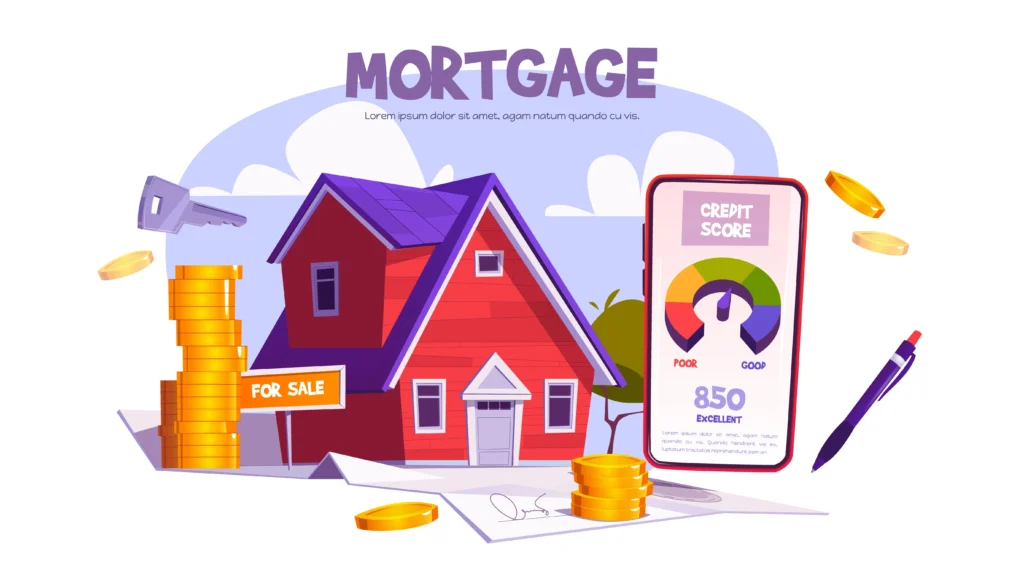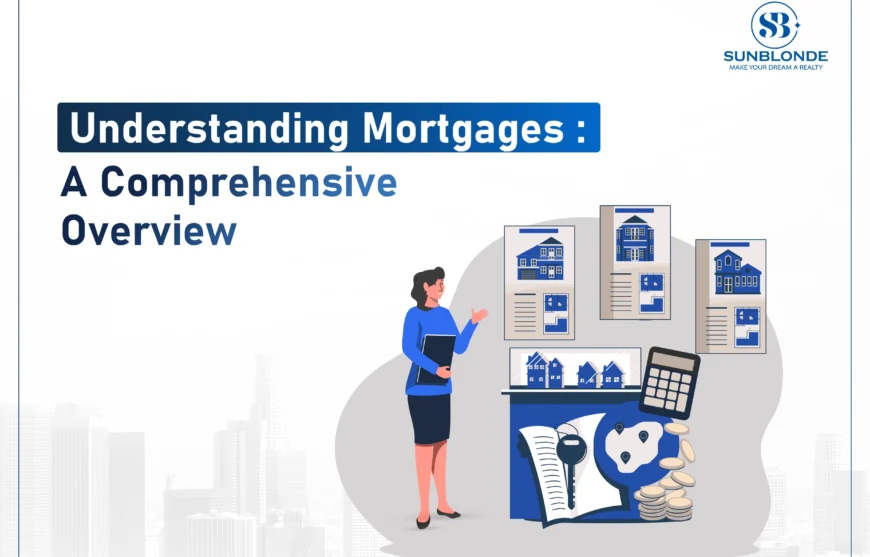Understanding Mortgages: A Comprehensive Overview
What is a Mortgage?
A mortgage is a type of loan specifically designed for purchasing real estate. Unlike other loans, a mortgage is secured by the property itself, meaning the property acts as collateral for the loan. This security provides the lender with a level of protection, as they have the right to repossess the property if the borrower fails to meet the repayment terms.
Mortgages are composed of several key components, often abbreviated as PITI: Principal, Interest, Taxes, and Insurance. The principal refers to the actual amount of money borrowed, while the interest is the cost of borrowing that money, typically expressed as an annual percentage rate (APR). Property taxes are levied by the local government and are usually included in the monthly mortgage payment. Insurance covers the property against potential risks such as fire, theft, or natural disasters, and is also included in the monthly payment.
The roles of the lender and borrower are crucial in a mortgage agreement. The lender, often a bank or a financial institution, provides the funds for the purchase of the property. In return, the borrower agrees to repay the loan over a specified period, usually 15 to 30 years, through regular monthly payments. The borrower also agrees to meet other conditions outlined in the mortgage contract, such as maintaining insurance on the property and paying property taxes.
Mortgages play a vital role in the process of homeownership, making it possible for individuals and families to purchase homes without needing the full purchase price upfront. They also enable the purchase of various types of properties, including residential homes, commercial properties, and investment properties. Each type of property may have different mortgage requirements and terms, but the basic principles of a mortgage remain the same.
Understanding the components and functions of a mortgage is essential for anyone considering purchasing real estate, as it helps in making informed financial decisions and managing long-term financial commitments.

Types of Mortgages
When considering homeownership, understanding the different types of mortgages available is crucial. Each mortgage type has unique features, benefits, and potential drawbacks, making them suitable for various financial situations and goals. Let’s delve into the most common mortgage types: fixed-rate mortgages, adjustable-rate mortgages (ARMs), interest-only mortgages, and government-backed loans such as FHA, VA, and USDA loans.
Fixed-Rate Mortgages: A fixed-rate mortgage offers stability with a consistent interest rate throughout the loan’s life. This predictability allows for easier budgeting as monthly payments remain unchanged. Typically available in 15, 20, or 30-year terms, fixed-rate mortgages are ideal for borrowers planning to stay in their homes long-term and who prefer the certainty of fixed payments. However, they may come with higher initial interest rates compared to other mortgage types.
Adjustable-Rate Mortgages (ARMs): ARMs feature an interest rate that adjusts periodically based on a specific index. Initially, ARMs often offer lower interest rates compared to fixed-rate mortgages, making them attractive for borrowers who anticipate moving or refinancing before the adjustment period. However, the variability can lead to unpredictable monthly payments, posing a risk if rates increase significantly.
Interest-Only Mortgages: With an interest-only mortgage, borrowers pay only the interest for a set initial period, typically 5-10 years. This results in lower initial payments but does not reduce the principal balance. After the interest-only period, payments increase substantially as both principal and interest must be paid. These loans can be beneficial for borrowers with irregular income or those expecting significant future earnings, but they carry the risk of higher long-term costs and potential negative amortization.
When choosing a mortgage, consider your financial situation, long-term goals, and risk tolerance. Each type of mortgage offers distinct advantages and challenges, so thorough research and consultation with a financial advisor can help you make an informed decision.
The Mortgage Application Process
Applying for a mortgage is a multi-step process that begins with pre-qualification and pre-approval. Though often used interchangeably, these terms have distinct meanings. Pre-qualification is an initial evaluation of a borrower’s financial status, usually based on self-reported information. It gives a rough estimate of how much you might be able to borrow. Pre-approval, however, is a more thorough process where the lender verifies your financial details and provides a conditional commitment for a specified loan amount.
Before proceeding, it is crucial to gather all necessary documentation. This includes proof of income, such as pay stubs or tax returns, credit history, and employment verification. Lenders scrutinize these documents to assess your ability to repay the loan. A comprehensive credit report is essential, as it reflects your financial behavior and impacts the terms of your mortgage.
A mortgage broker can be an invaluable resource during this phase. Brokers act as intermediaries between borrowers and lenders, helping you navigate the complex landscape of mortgage options. They can assist in finding the most favorable terms and conditions that suit your financial situation. Selecting the right lender is equally important; factors such as interest rates, fees, and customer service should be considered.
Once you have chosen a lender and submitted your application, the underwriting process begins. Underwriters review all the provided documentation to ensure that you meet the lender’s criteria. This stage also involves an appraisal of the property to determine its market value. The appraisal is critical because it affects the loan amount you qualify for; lenders will not lend more than the property is worth.
Upon successful underwriting and appraisal, you receive final approval. The closing process is the concluding step, where all parties involved sign the mortgage agreement. At this point, you will also pay any closing costs and receive the keys to your new home. Understanding each stage of the mortgage application process is vital for a smooth and successful home-buying experience.

Managing Your Mortgage
Once the mortgage process is complete and the loan has been secured, the ongoing responsibility of managing your mortgage begins. Regular payments are a crucial aspect of mortgage management. Ensuring that payments are made on time helps maintain a good credit score and avoids late fees or penalties. It’s essential to understand how interest rates impact monthly payments. Fixed-rate mortgages offer stability in payments, while adjustable-rate mortgages may result in varying monthly amounts based on market conditions.
Strategic planning can help in paying off the mortgage early. Extra payments towards the principal balance can significantly reduce the loan term and interest paid over the life of the loan. Refinancing can be an effective tool for managing your mortgage. Borrowers might consider refinancing to secure a lower interest rate, reduce monthly payments, or switch from an adjustable-rate to a fixed-rate mortgage. Refinancing can also provide access to home equity for other financial needs.
However, there are challenges to be aware of. Falling behind on mortgage payments can lead to serious consequences, including potential foreclosure. It’s vital to communicate with your lender if you’re experiencing financial difficulties. Many lenders offer support options such as loan modifications or forbearance plans to help borrowers avoid foreclosure.
Managing mortgage-related taxes and insurance is another critical aspect. Property taxes and homeowners insurance are often included in the monthly mortgage payment through an escrow account. Keeping track of these expenses and ensuring they are paid on time is essential to avoid additional costs or penalties.
In conclusion, effective mortgage management requires regular monitoring and strategic planning. Understanding the impact of interest rates, making timely payments, considering refinancing options, and staying on top of taxes and insurance can help ensure a smooth and successful mortgage experience.
Recent Posts
- Ruparel Premia: A New Era of Luxury Living in Mulund West
- Maverick Namaha Mulund: A Landmark of Luxury in Mulund West
- Exploring Mumbai’s New Residential Projects
- Exploring the New Commercial Projects Launched in Mumbai
- Traditional Investment vs Real Estate Investment: A Comprehensive Guide


Leave a Reply